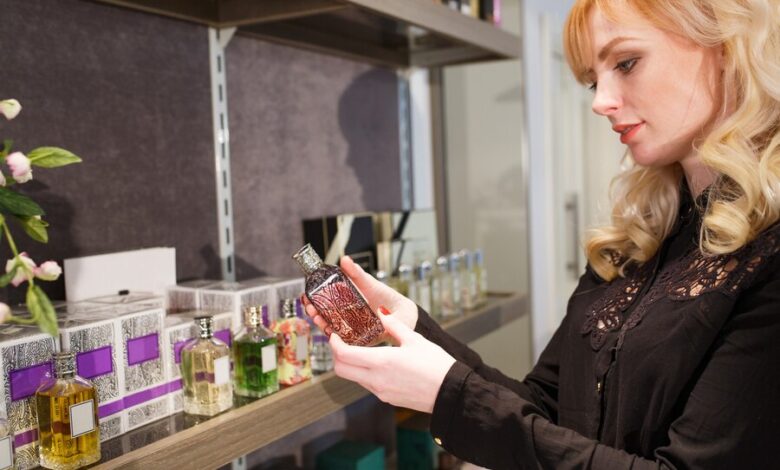
Introduction
In the high-stakes world of perfume distribution, supply chain efficiency is paramount. With the market’s increasing demand for timely deliveries and precise inventory management, businesses are continually seeking ways to refine their operations. One such method that has proven to be both effective and indispensable is the use of barcodes. This post will delve into how barcodes can significantly enhance supply chain efficiency, particularly within the perfume industry, benefiting retailers, supply chain managers, and logistics professionals alike.
Understanding Barcodes
How Barcodes Work
Barcodes are machine-readable representations of data that track products throughout the supply chain process. Typically, a barcode consists of a series of parallel lines of varying widths, which encode information such as product type, manufacturer, and location. When scanned by a barcode reader, this data is quickly decoded and entered into a computer system, enabling real-time tracking and inventory management.
Significance in Inventory Management
For perfume retailers and supply chain managers, barcodes are more than just lines on product packaging—they are critical tools for managing inventory with precision. Barcodes help streamline various processes, from receiving shipments to stocking shelves and processing sales. By providing a reliable method for tracking inventory, barcodes minimize errors and enhance the overall efficiency of supply chain operations.
Benefits of Barcodes in Perfume Distribution
Enhanced Accuracy
One of the primary benefits of using barcodes in perfume distribution is the enhanced accuracy they bring to inventory management. Manual inventory tracking is prone to human error, which can lead to discrepancies in stock levels, misplaced items, and ultimately, lost revenue. Barcodes eliminate these issues by providing an automated and error-free way to record product information. This level of accuracy is crucial for managing high-value inventory like perfumes, where even small mistakes can have significant financial implications.
Real-Time Tracking
In an industry where timing is everything, real-time tracking afforded by barcode technology is invaluable. Barcodes enable supply chain managers to monitor the movement of products from the moment they leave the manufacturer to when they arrive at the retailer. This real-time visibility allows for better decision-making and faster response times to any issues that may arise, such as delays or misplaced shipments.
Reduced Operational Costs
Implementing barcodes can lead to substantial cost savings by reducing the need for manual labor and minimizing errors. Automated barcode systems streamline various tasks, from inventory counts to order fulfillment, allowing businesses to operate more efficiently and with fewer staff. These savings can then be redirected towards other areas of the business, such as marketing and product development.
Implementing Barcodes in the Supply Chain

Steps to Integrate Barcodes Effectively
- Assessment and Planning: Begin by assessing your current inventory management system and identifying areas where barcodes can improve efficiency. Develop a comprehensive plan that outlines the implementation process, including timelines and budget considerations.
- Choose the Right Barcode System: Select a barcode system that is compatible with your existing infrastructure and meets your business needs. There are various types of barcode systems available, ranging from simple UPC codes to more complex QR codes and RFID tags.
- Training and Support: Ensure that your staff is well-trained in using the new barcode system. Provide ongoing support and resources to help them adapt to the new technology and troubleshoot any issues that may arise.
- Integration with Existing Systems: Seamlessly integrate the barcode system with your inventory management and ERP systems to ensure smooth data flow and real-time updates.
- Continuous Improvement: Regularly review and refine your barcode system to keep up with evolving business needs and technological advancements. Solicit feedback from staff and stakeholders to identify areas for improvement.
Case Studies
Real-World Examples of Perfume Brands
Brand A: Luxury Perfume Innovators
Brand A, a leading luxury perfume manufacturer, implemented a barcode system to streamline its global distribution network. By integrating barcodes with their inventory management software, they achieved a 30% reduction in inventory errors and a 20% increase in order fulfillment speed. This led to improved customer satisfaction and significant cost savings.
Brand B: Boutique Fragrance House
Brand B, a boutique fragrance house, faced challenges with managing their inventory across multiple retail locations. After adopting a barcode system, they were able to gain real-time visibility into stock levels and streamline their replenishment process. As a result, they experienced a 25% reduction in stockouts and a 15% increase in sales.
Future Trends and Innovations
The Evolving Role of Barcodes
As technology continues to advance, so too does the role of barcodes in supply chain management. Innovations such as QR codes and RFID tags are enhancing the capabilities of traditional barcodes, offering even greater accuracy and efficiency. In the future, we can expect to see more widespread adoption of these advanced technologies, further transforming the landscape of inventory management and supply chain operations.
Potential of New Technologies
The integration of barcodes with emerging technologies like IoT and AI holds enormous potential. IoT-enabled barcode scanners can provide real-time data on product condition and location, while AI can analyze this data to optimize inventory levels and predict demand trends. These advancements will enable businesses to operate with unprecedented efficiency and agility, ensuring they stay ahead in a competitive market.
Conclusion
In conclusion, barcodes are a powerful tool for enhancing supply chain efficiency in the perfume industry. By providing accurate, real-time tracking and reducing operational costs, barcodes can help businesses streamline their operations and improve customer satisfaction. As technology continues to evolve, the role of barcodes in supply chain management will only become more significant, offering even greater benefits to those who embrace this technology.
Call-to-Action
If you’re ready to take your perfume distribution to the next level, consider exploring barcode solutions tailored to your business needs. Enhance your supply chain efficiency and stay ahead in the competitive market by integrating barcodes into your operations. Contact us today to learn more and get started on your journey towards a more efficient and effective supply chain.



